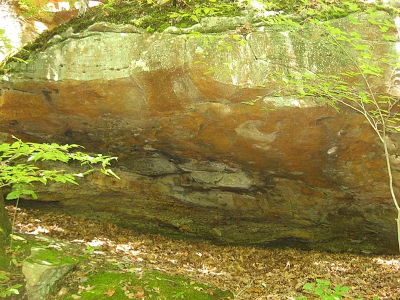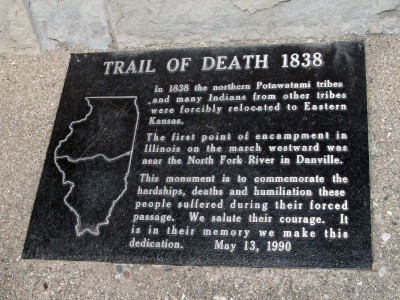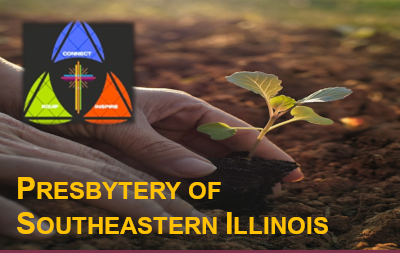Land Acknowledgement
As part of our commitment to repudiate the Doctrine of Discovery and to confess the denomination’s complicity in dispossession and settler colonialism, the Presbytery of Southeastern Illinois makes the following land acknowledgment.
The Presbytery of Southeastern Illinois is situated on the ancestral homelands of the Illini, Kaskaskia, Kickapoo, Osage, Ochethi Sakowin, Peoria, Mayaamia, Sauk & Meskwaki, Yuchi (S’atsoyaha), and the Shawnee people.
Unlike neighboring Midwestern states, no tribal lands are federally recognized within the state of Illinois. Yet reminders of the Native American presence remain as a part of the history of colonial settlement in the names of cities, rivers, streets, and sports teams. Also located within the bounds of our Presbytery are sites sacred to many of these peoples. Among them are:
- Millstone Bluff in Pope County. Millstone Bluff was added to the National Register of Historic Places in 1973. The area contains petroglyphs and the mostly undisturbed ruins of a village from over 500 years ago.
- Piney Creek Ravine State Natural Area in Randolph County. Piney Creek was added to the National Register of Historic Places in 2001. The ravine contains the largest collection of pre-Columbian rock art in Illinois.
- Kincaid Mounds State Historic Site in Massac County. The Kincaid Mounds site contains a village occupied over a 1000 years ago. The National Historic Landmarks' Statement of Significance from 1964 described Kincaid Mounds as, "One of the major temple mound sites in the Midwest region of the country, its location suggests that the site was probably a major trade station along the Ohio River."
Vastly different from the sacred sites above is the Potawatomi Trail of Death. This 660 mile, forced march began at Twin Lakes in what is now Marshall County, Indiana and ended in what is now Linn County in eastern Kansas. About 859 men, women, and children were expelled at gunpoint from their homes on November 4, 1838. They were forced to march for 61 days. Forty-two people died during this passage. Most of those who died were children.
It is noteworthy that the majority of these persons were baptized Christians. Fr. Benjamin Marie Petit, a young, Jesuit priest, accompanied his parishioners on the Trail. He died shortly after they arrived in Kansas.
Their first encampment in Illinois was near the First Presbyterian Church of Danville. In terms of the current bounds of our Presbytery, the Potawatomi Trail of Death passed through Vermilion, Champaign, Piatt, and Macon Counties. The state legislatures of Indiana, Illinois, Missouri, and Kansas have declared the route of their passage to be a Regional Historic Trail. Within our Presbytery there are commemorative memorial plaques in or near: Danville, Catlin, Homer, Sidney, Sadorus, Monticello, and Decatur.
It is our responsibility to acknowledge this historical context and to be good partners with and advocates for the nations on whose trust lands we inhabit.


The Potawatomi Trail of Death historic marker in Ellsworth Park, Danville, Illinois. Click the image for a larger version and the photographer's information, metadata, and photo release



